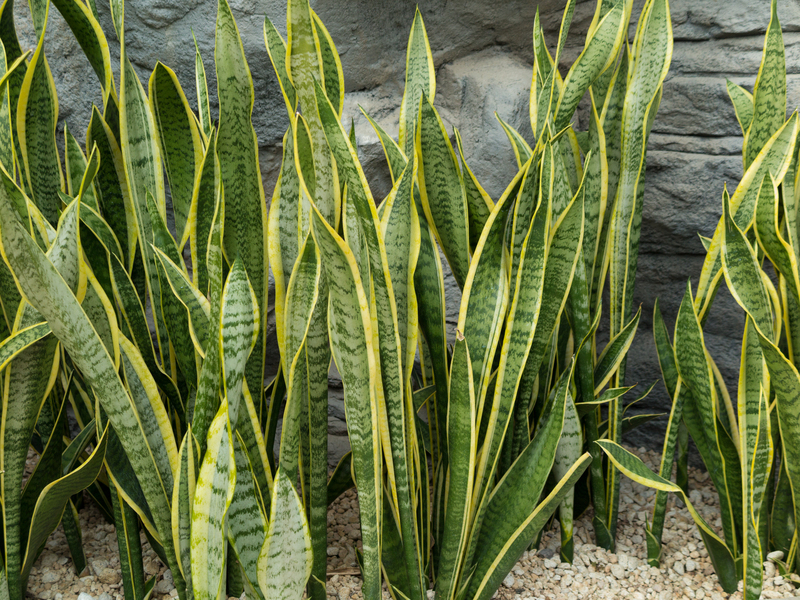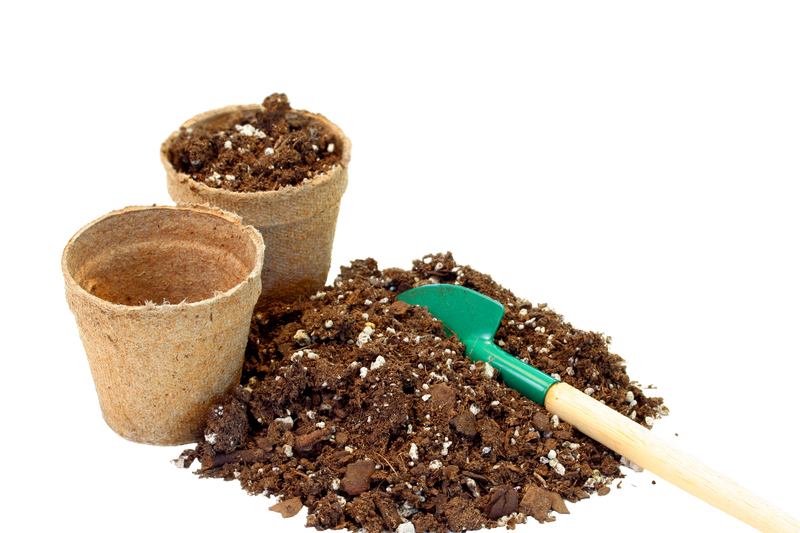Transform Your Garden with These 3 Weed Control Tips
Posted on 17/08/2025
Transform Your Garden with These 3 Weed Control Tips
Gardening, for many, is a source of relaxation, beauty, and pride. However, dealing with weeds can quickly turn this rewarding pastime into a struggle. Unwanted plants not only mar the appearance of your green space but also compete for essential resources, threatening the health and productivity of your favorite blooms and vegetables. If you're seeking to transform your garden, understanding the most effective methods of weed control is crucial. In this comprehensive guide, we'll explain three proven weed management strategies that will keep your garden healthy, vibrant, and weed-free!
Why Weed Control Is Essential for Garden Health
Before diving into specific techniques, it's important to recognize the impact weeds have on your garden. By implementing efficient weed prevention methods, you can ensure:
- Better nutrient availability for your plants
- Improved plant growth and yield
- Reduced pest and disease risk
- A more visually appealing landscape
Now, let's explore the top three weed control tips that will help you master your garden, naturally and sustainably.

Tip 1: Mulching - Nature's Protective Blanket
What Is Mulching?
Mulching is the practice of covering bare soil with a layer of organic or inorganic material. This method is a highly effective way to suppress weed growth in gardens. By blocking sunlight, mulch prevents weed seeds from germinating, maintaining a tidy and healthy garden for longer periods.
Choosing the Right Mulch
There are a variety of mulches, each with their own benefits:
- Organic mulch: Wood chips, straw, shredded bark, compost, grass clippings, leaves
- Inorganic mulch: Black plastic, landscape fabric, gravel, rubber mulch
While organic mulch enriches the soil as it decomposes, inorganic mulches are excellent for areas where you want longer-lasting weed protection.
How to Apply Mulch for Optimal Weed Prevention
- Remove existing weeds: Pull up all weeds by the roots before you start mulching.
- Apply mulch evenly: Spread a layer of about 2-4 inches thick (5-10 cm) around plants and over the soil surface.
- Leave space around stems: Keep mulch a few inches away from plant stems to prevent rot.
- Refresh regularly: Top up organic mulch throughout the season as it breaks down.
Pro Tip: Combine mulching with landscape fabric for extra difficult areas. The fabric acts as a barrier below the mulch, providing double protection against persistent weeds!
Advantages of Mulching in Weed Suppression
- Prevents weed seeds from receiving sunlight
- Helps retain soil moisture
- Moderates soil temperature and prevents erosion
- Improves soil fertility (organic mulches)
- Gives your garden a polished, uniform look
By applying the right mulch, you'll notice a significant reduction in unwanted garden weeds, allowing your flowers, vegetables, and shrubs to truly flourish.
Tip 2: Smart Planting and Dense Ground Covering
Outcompete Weeds by Smart Plant Selection
One of the best defenses against weeds is a strong offense: fill your garden beds with vigorous, densely-planted desirable species that leave little space or resources for weeds to grow. Crowd out weeds before they have a chance to settle in!
What Plants Make the Best Weed Barriers?
- Ground covers: Ajuga, creeping thyme, vinca, sedum
- Low-growing shrubs: Spirea, juniper, cotoneaster, boxwood
- Perennial flowers: Daylilies, black-eyed Susan, hosta, cone flowers
- Fast-growing annuals: Marigolds, nasturtiums, sweet alyssum
Opt for quick-spreading species in problem patches--these will establish root systems that make life difficult for weedy invaders.
Spacing and Planting Techniques Matter
- Plant close together when possible as recommended for each species.
- Interplant flowers, herbs or vegetables for a living mulch effect.
- Use succession planting to ensure minimal bare soil between harvests.
*By creating a living carpet of foliage,* you can naturally prevent weed infestations and even reduce how often you need to weed by hand.
Benefits of Dense Planting for Weed Control
- Shades the soil, reducing weed seed germination
- Roots outcompete weeds for water and nutrients
- Less open ground for airborne weed seeds to settle
- Increases biodiversity, benefiting pollinators and beneficial insects
Combining this strategy with mulching leads to even greater weed suppression and promotes a lush, garden-worthy landscape.
Tip 3: Consistent Manual and Mechanical Weed Removal
Hand-Pulling: The Most Reliable Method
While not the quickest, regular hand-weeding is the most effective way to eliminate weeds before they seed. The key is to be consistent and thorough.
- Weed after rain or watering: Moist soil makes it easier to remove the full root system.
- Use a fork or weeding tool: These help you get underneath deep taproots (like dandelions).
- Remove the entire plant: Any root or rhizome fragment left behind may regenerate.
- Catch weeds early: Pull seedlings before they become established and flower.
Mechanical Weeding Tools & Techniques
For larger garden beds or persistent weeds, mechanical tools can save time and effort:
- Long-handled hoes: Effective for slicing small weeds off just below the soil surface.
- Cultivators: Loosen soil and uproot young weeds at the same time.
- Weed torches: Burn off annual weeds on gravel paths or between stone slabs (never use near dry plants or mulch).
- String trimmers: Keep pathways and edges tidy, though this doesn't eliminate roots.
Tips for Effective Manual Weed Control
- Schedule regular weeding sessions: Weekly attention prevents weed overwhelm.
- Work section by section: Start with the most visible or problematic areas first.
- Dispose of pulled weeds properly: Compost only those without seeds or persistent roots.
- Wear gloves and kneepads: Comfort makes the task more enjoyable!
Manual weed control, while labor-intensive, rewards you with immediate results and a sense of accomplishment. Over time, as you reduce the weed seed bank in your soil, the task becomes much easier.
Bonus Tips for Sustainable Weed Management
-
Water wisely:
Water directly at plant bases rather than overhead, to deprive weed seeds between plants of moisture. -
Inspect new plants and soil:
Ensure they are weed-free before introducing them into your garden beds. -
Avoid soil disturbance:
Only dig when necessary; bringing hidden weed seeds to the surface activates them. -
Consider organic solutions:
Homemade sprays (like vinegar solutions) work on young, annual weeds but must be used with care to avoid harming desirable plants.

Frequently Asked Questions About Weed Control
How can I prevent weeds naturally without chemicals?
The best organic weed control methods include mulching, dense planting, regular hand weeding, and careful watering. These approaches eliminate the need for synthetic herbicides, promoting healthier soil and safer environments for pets and pollinators.
How often should I weed my garden?
Regular weeding--at least once a week during the growing season--prevents small problems from becoming overwhelming infestations. It's much easier to pull a 2-inch weed than fight a 2-foot one!
Can mulching eliminate weeds entirely?
While mulch is extremely effective at preventing new weeds from sprouting, it won't instantly remove existing perennial weeds. Remove as many weeds as possible before laying mulch, and spot-weed as necessary.
What about using weed fabric under mulch?
Landscape fabric boosts weed suppression and is best for paths or non-planting areas. In flower/vegetable beds, organic mulch alone is usually sufficient and decomposes into valuable compost.
Conclusion: Enjoy a Weed-Free Garden All Season Long!
Transforming your outdoor space doesn't require harsh chemicals or endless hours of frustration. By adopting these top weed control tips--mulching, strategic planting, and consistent manual removal--you can enjoy a thriving, beautiful, and sustainable garden year after year. Remember, the secret to garden weed control lies in persistence, planning, and a little extra care.
Ready to reclaim your flower beds and vegetable patches? Start today with these three proven methods, and watch your garden transform before your eyes!



